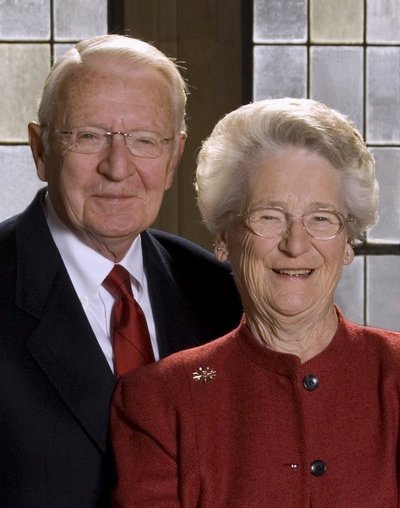November 17, 2006
$1.5 million to advance promise of woody biomass for fuel in Washington
With a potentially huge supply of woody material thinned from Washington forests, the state’s pulp and paper mills could become the “biorefining” backbone for turning woody plant material into fuel and other products, a University of Washington professor says.
Such a major transformation is possible as technical and logistical challenges are overcome, says Rick Gustafson, University of Washington professor of forest resources and holder of the first endowed chair in bioresources on the U.S. West Coast, a position approved by the UW regents this fall.
“We’re going to have to pursue all possible means of renewable energy production if we are to make a dent in our energy needs,” he says.
The $1.5 million Denman Chair in Bioresources Science and Engineering was made possible with a $1 million donation from Dick and Mary Ellen Denman of Medina and $500,000 from the University Founder’s Match program. Dick Denman, a UW alumnus who spent his career managing pulp and paper operations for Simpson and Weyerhaeuser, and Mary Ellen, also a UW alum, are part owners of the Port Townsend Paper Corp.
The U.S. Department of Energy estimates that enough cellulosic ethanol could be produced from crops, agricultural wastes and forest wastes to lower U.S. gasoline consumption 30 percent by 2030. Turning woody material into fuel, however, lags behind the technology of turning crops and agricultural wastes into ethanol, in part because it is more difficult to break apart the cells of woody material to get at the useful chemicals inside.
“There’s a whole dog’s dinner of fuels you can make from woody biomass,” Gustafson says, including automotive fuel, green diesel and, possibly, jet fuel.
Other bioproducts that could be extracted from woody debris range from carbon fibers, those extremely strong thin fibers used for such things as aircraft parts and golf clubs, to high-value polymers, which can be added to liquids that need to be thickened, such as contact lens solution.
Creating new ways to use woody biomass also would make it much more affordable for the state to thin Eastern Washington forests at risk for fires and Western Washington stands to make the habitat more diverse so it is hospitable to more kinds of animals. Such thinning operations would cost less if the trees harvested had some market value, whereas today the markets are weak or non-existent for trees 10 inches in diameter or less. Other sources of woody biomass could include residues from logging, thinning on commercial forestlands, sawmill residues and urban wood waste.
The state’s pulp and paper industry, which in 2005 employed 12,200 and generated business income of almost $4.5 billion, is open to opportunities to diversify and has advantages over building new biorefineries, Gustafson says. That’s because sophisticated processing facilities already exist, mills sit on transportation lanes that make it easy to get materials in and products out, environmental safeguards are in place and a trained workforce exists.
“They’re already giant biorefineries — although they don’t use that term — with wood going in and paper coming out,” he says.
Denman says he hopes their donation leads to innovative ways for mills to get greater value from woody debris than they get by taking what’s left after papermaking and burning it to run their steam boilers.
“What’s needed are alternatives to having those chemicals go up in smoke,” he says.
Existing mills may be the potential backbone for biorefining in the state, but such activities could occur elsewhere as well, Gustafson says. If processors can be made small enough to fit on flatbed trucks, for example, they could be taken to forests where thinning is underway.
Among other things, Gustafson says the Denman money will be used in the coming year to offer a symposium for researchers, engineers, managers and governmental leaders to determine the direction for Washington’s bioresources and bioengineering efforts.
Both Denmans earned degrees from the UW, Dick in chemistry and Mary Ellen in business economics. He was operations manager for Simpson Paper from 1952-1962, and development manager and then vice president for paper with Weyerhaeuser from 1963-1987. Although retired, he has remained active in the region’s pulp and paper industry.
“We hope our college’s research and education programs related to sustainable bio-based products and sources of energy will lead to more efficient and carbon-neutral resource use,” says B. Bruce Bare, dean of the College of Forest Resources.
###
For more information: Gustafson, (206) 543-2790, pulp@u.washington.edu



